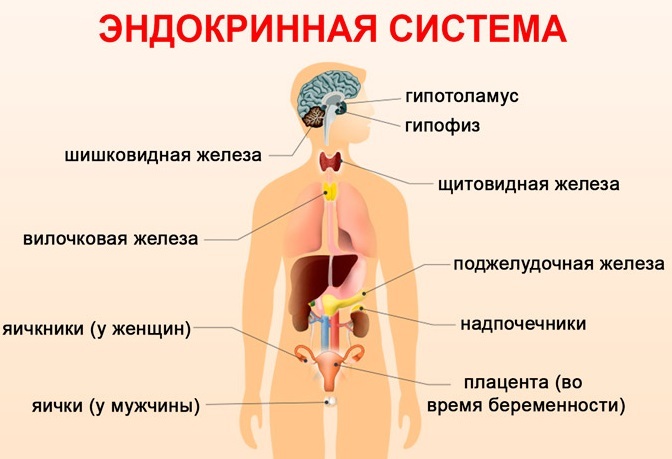A similar disease occurs in animals, mostly dogs and people, and at any age. Naturally, such a serious failure of the kidneys work has a negative impact on the functionality of the whole organism. As the disease is manifested and how it can be cured?

What it is?
Diabetes insipidus - a rare disease (about 3 per 100 000), associated with dysfunction hypothalamus or pituitary gland which is characterized by polyuria (release 6-15 liters of urine per night) and polydipsia (thirst).
It occurs in both sexes among both adults and children. Most often fall ill young people - from 18 to 25 years. Known cases of children first year of life (A. D. Arbuzov, 1959, V. Sharapov FROM. 1992).
Causes of diabetes insipidus
Diabetes insipidus - a pathology that is caused by deficiency of vasopressin, it is absolute or relative deficiency. Vasopressin (antidiuretic hormone) is secreted in the hypothalamus and, among other functions, is responsible for the normalization of urination process. Accordingly, the causes of origin customary to distinguish three types of the disease: genetic, acquired, idiopathic.
The majority of patients with this rare disease the cause is still unknown. This diabetes is called - idiopathic, it affects up to 70 percent of patients. Genetic - a hereditary factor. In this case, diabetes insipidus is sometimes manifested in families and in several generations in a row.
Medicine explains that major changes in the genotype, contributing to the emergence of operational antidiuretic hormone. Hereditary predisposition of this disease is due to a congenital defect in the structure of the intermediate and midbrain.
Considering the causes of diabetes insipidus should consider the mechanisms of its development:
1) Central Diabetes Insipidus - occurs when insufficient secretion of vasopressin in the hypothalamus or in violation of its release from the pituitary into the bloodstream, presumably its reasons are:
- The pathology of the hypothalamus, as he is responsible for the regulation of urine excretion and synthesis of antidiuretic hormone, the violations of his work leads to the disease. Triggers causes and factors of disorders of hypothalamic functions can be acute or chronic infectious diseases: sore throat, influenza, and venereal diseases, tuberculosis.
- Surgery on the brain, and inflammation of the brain pathology.
- concussion, traumatic brain injury.
- Autoimmune diseases.
- Cystic, degenerative, inflammatory kidney lesions that disrupt the perception of vasopressin.
- Neoplastic processes hypothalamus and pituitary gland.
- Also, the presence of hypertension is one of the aggravating for diabetes insipidus factors.
- Vascular lesions of the hypothalamic-pituitary system, leading to problems of cerebral circulation in the blood vessels that nourish the hypothalamus and pituitary gland.
2) Renal diabetes insipidus - while vasopressin is produced in normal amounts, but the kidney tissue it does not respond adequately. The reasons may be as follows:
- damage to the urinary tubule of the nephron of kidney or brain substance;
- hereditary factor - congenital abnormality;
- sickle cell anemia;
- potassium increase or drop in blood calcium;
- chronic renal insufficiency;
- amyloidosis (amyloid deposition in tissues) or polycystic (formation of multiple cysts) kidney;
- medication which may affect the toxic renal tissue ( "Demeklotsilin" "Amphotericin B", "Li");
- sometimes pathology occurs in the elderly, or the weakening of other pathology.
Sometimes, excessive thirst (polydipsia psychogenic) may occur because of the stress. Diabetes insipidus, or on the background of pregnancy that develops in 3 trimester because of the destruction of vasopressin enzymes produced by the placenta. Both kind of violations yourself liquidated after the elimination of the root causes.
Classification
Accepted provide two clinical forms of the disease:
- Nephrogenic diabetes insipidus (peripheral). This form of the disease is the result of the reduction or complete absence of sensitivity of the distal tubule to the biological effects exerted by vasopressin. Typically, this occurs in the case of chronic diseases of the kidneys (pyelonephritis or on the background of polycystic kidney disease), long-term reduction in blood potassium and calcium levels increase, with insufficient intake of dietary protein - protein starvation, Sjogren's syndrome, some congenital defects. In some cases, the disease runs in families.
- Neurogenic diabetes insipidus (central). It develops as a result of pathological changes in the nervous system, in particular in the area of the hypothalamus or pituitary posterior lobe. Usually, the cause of the disease in this case the operations are complete or partial removal pituitary infiltrative pathology art (hemochromatosis, sarcoidosis), traumas or inflammatory changes nature. In some cases, neurogenic diabetes insipidus is idiopathic, determined simultaneously in several members of one family.

The symptoms of diabetes insipidus
The earliest signs of diabetes insipidus - a strong agonizing thirst (polydipsia), frequent and copious urination (polyuria), which disturb the patients, even at night. The day may be released from 3 to 15 liters of urine, sometimes it reaches up to the amount of 20 liters per day. Therefore, a patient tormented thirst.
- The symptoms of diabetes insipidus in males are decreased libido and potency.
- The symptoms of diabetes insipidus in women: menstrual irregularities until amenorrhea associated with this infertility, and if pregnancy still came - an increased risk of spontaneous abortion.
- The symptoms of diabetes in children pronounced. In newborns and infants the condition of this disease is usually severe. There is an increase in body temperature, there is unexplained vomiting, develop disorders of the nervous system. In older children up to adolescence symptom of diabetes insipidus is a bedwetting, or enuresis.
In the future, the following symptoms are attached with the progression:
- Due to the consumption of large amounts of fluid stretches the stomach, and sometimes even drops;
- There are signs of dehydration (lack of water in the body): dry skin and mucous membranes (mouth dryness), reduced body weight;
- Due to the separation of urine in large amounts stretches the bladder;
- Due to the lack of water in the body is disturbed production of digestive enzymes in the stomach and intestine. Therefore the patient is reduced appetite, gastritis or colitis develops, there is a tendency to constipation;
- Often lowers blood pressure and heart rate quickens;
- Since the water in the body is not enough, decreased sweating;
- The patient tires easily;
- Sometimes there is unexplained nausea and vomiting;
- Can increase the body temperature.
- Sometimes there is a bedwetting (enuresis).
As thirst and copious and continuing during the night hours, the patient has the mental and emotional disorders:
- emotional lability (sometimes develop even psychosis), and irritability;
- insomnia and headaches;
- decrease in mental alertness.
These are the symptoms of diabetes insipidus in typical cases. However, manifestations of the disease may be slightly different for men and women as well as children.
Diagnostics
In typical cases, the diagnosis of diabetes insipidus is not difficult and is based on:
- Extreme thirst
- daily urine volume of more than 3 liters per day
- plasma giperosmolyalnosti (greater than 290 mOsm / kg, depending on the liquid consumption)
- high sodium content
- hypoosmolality urine (100-200 mOsm / kg)
- low relative density of urine (<1010)
To clarify the causes of the disease are carefully analyzed the results of X-ray, ophthalmic and neuropsychiatric examinations. It is necessary to carry out magnetic resonance imaging of the brain.

How to treat diabetes insipidus?
Successful outcome of therapy in this disease is the precise definition and elimination of the main reasons causing malfunction generation vasopressin, e.g., tumors or metastases in the brain, with a central form insipidus diabetes.
Drugs for diabetes insipidus selects the physician, they are all synthetic analogue of antidiuretic hormone. Depending on the duration of action of the drug medication should be taken several times a day, or one every few days (long acting formulations).
In diabetes insipidus type forms the central most commonly used drugs carbamazepine or Hlorpropamid - these agents stimulate the production and release of vasopressin. In order to prevent dehydration amid abundant and frequent urination patient intravenously administered saline solutions.
diabetes insipidus treatment in women is more advice gynecologist and correction of the menstrual cycle.
food rules
Everyone knows that in patients with diabetes mellitus "special" relationship with sugars. But what can we say about the food, if the disease insipidus? In this case the limitation will affect other product - salt. If the patient is not suffering from renal insufficiency, it is possible to replace salt in a dietary supplement, for example, Sanasol.
Diet for a given ailment intended to limit the protein intake of food (not more than 70 grams a day). The patient recommend dietary table №7.
The diet includes the following foods and beverages:
- Berries and fruit with sweet and sour taste.
- Vegetables fresh.
- Fresh juices, kvass, teas - herbal and green.
- Water with lemon juice.
- Fermented foods and beverages.
- Lean meats.
- Low-fat varieties of fish and seafood.
Forecast
Idiopathic diabetes insipidus, provided adequate replacement therapy risk for the patient's life is not, however, and recovery from this form is impossible.
Diabetes insipidus, which appeared on the background of any other disease, in some cases passes spontaneously after elimination of the reasons that caused it.



